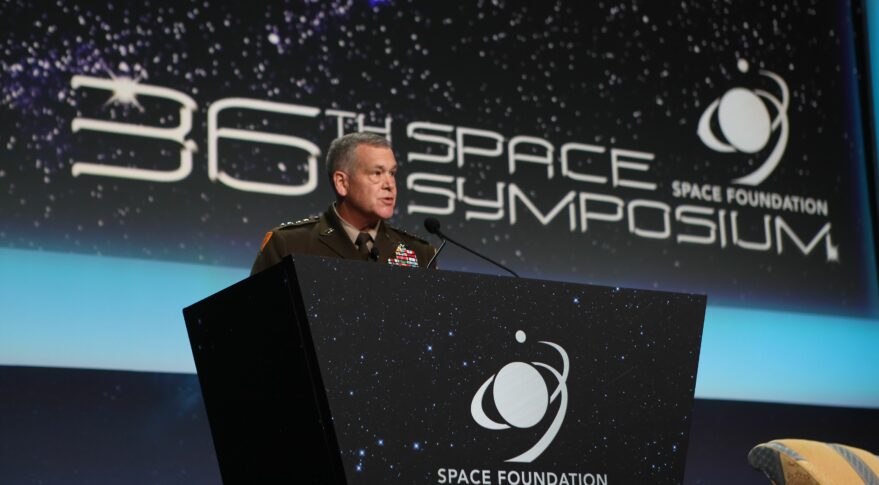In Today’s Deep Space Extra… Senator Jerry Moran optimistic about increased NASA funding. Lockheed Martin’s Lisa Callahan speaks about the importance of digital transformation for deep space.
Human Space Exploration
NASA chief Bill Nelson optimistic about Artemis Moon landing goals amid big delays
Space.com (8/24): Despite obstacles, NASA Administrator Bill Nelson is pushing full steam ahead to the Moon, he said yesterday at the Space Symposium. The Human Landing System (HLS) award has been held up, the spacesuits have been technically challenging, and COVID-19 has caused unprecedented disruptions in the supply chain, Nelson said. “But remember back to what [President John F.] Kennedy said,” Nelson added, referencing Kennedy’s 1962 speech at Rice University in which he announced, “We choose to go to the Moon in this decade and do the other things, not because they are easy, but because they are hard.”
NASA head Nelson hopes U.S.-Russian cooperation on ISS will continue beyond 2030
Sputnik International of Russia (8/25): Speaking on the sidelines of the 36th annual Space Symposium, NASA Administrator Bill Nelson said he supports extending NASA-led operations of the International Space Station (ISS) beyond 2030 and intends to discuss the prospect when he meets with Dmitry Rogozin, head of Roscosmos, the Russian space agency, later this year. Nelson said he’d also like Russian to partner with NASA in the lunar orbiting, human tended Gateway. (Editor’s note: Sputnik International of Russia is a Russian state-owned news source).
Moran: two shots to increase NASA funding this year
SpaceNews.com (8/25): In remarks before the 36th annual Space Symposium, U.S. Sen. Jerry Moran described two avenues available to lawmakers this year to increase NASA funding. The Kansas Republican is the ranking member of the Senate’s Commerce, Justice, and Science Appropriations Subcommittee and a member of the Commerce Science and Transportation Committee, an authorization panel, providing him with two opportunities to help advance NASA’s efforts through the normal annual budget formulation process and a budget reconciliation initiative. Moran was optimistic, at least in general terms, that Congress will be willing to increase funding for the agency, citing competition from China in space exploration. “I expect Congress will be very sympathetic,” he predicted. “In fact, I would say that Congress will be supportive of additional dollars for space and national defense because of adversaries like China.”
Accelerated digital transformations on Earth are a boost for deep space missions
Coalition Member in the News – Lockheed Martin, Coalition Board of Directors Member in the News – Lisa Callahan
SpaceNews.com (8/24): Lisa Callahan, Lockheed Martin Space’s vice president and general manager of commercial civil space, said during an August 24 Space Symposium session that COVID-19 prompted it to accelerate a “huge digital transformation road map” that was already in place to improve manufacturing workflows. For Orion, the spaceship Lockheed is developing to take astronauts to the Moon, Mars and other deep space missions, Callahan said the company created a “digital twin” that engineers can use to review and test systems through simulations, before ordering parts. Operationally, these digital twins can assist ground-based teams, enabling them to quickly solve issues on spacecraft that are out of reach of real-time communications. This will be “critically important” for missions to Mars that have to manage significant communication delays, she added.
Astronaut says pinched nerve is why NASA called off Space Station spacewalk
Spaceflightnow.com (8/24): NASA astronaut Mark Vande Hei on Tuesday identified a pinched nerve in his neck as the medical issue that prompted NASA on Monday to delay plans for a spacewalk. Initially planned for early Tuesday, the excursion was to pair Vande Hei with Japanese astronaut Akihiko Hoshide for the installation of a mounting bracket on the International Space Station’s (ISS) port side solar power truss to host the third of six planned Roll Out Solar Arrays (ROSA).
Other News
Updated intelligence report calls for improved monitoring of cislunar space
SpaceNews.com (8/24): An updated report from the U.S. Defense Intelligence Agency (DIA), “Challenges to Security in Space,” highlights planned activities beyond Earth orbit by a variety of countries. As part of the update, the DIA is urging a focus on space domain awareness, communications and navigation as multinational activities ramp up.
U.S. Space Command said August 24 that the warfighting force he leads has reached Initial Operational Capability
SpaceNews.com (8/24): The U.S. Space Command has achieved Initial Operational Capability, meaning a point where it has the personnel and resources to protect U.S. satellites, deter aggression and provide space-based services to the U.S. military, U.S. Army Gen. James Dickinson, commander of the newest branch of the U.S. military, said during a keynote speech Tuesday at the 36th Space Symposium.

